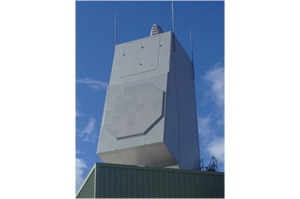Raytheon Company’s AN/SPY-6(V) Air and Missile Defense Radar (AMDR) successfully searched for, acquired and tracked a ballistic missile test target during its second live-target flight test at the U.S. Navy's Pacific Missile Range Facility at Kauai, Hawaii. This test featured a more complex ballistic missile target than prior tests, one reflecting a real threat and intended to challenge the detection and tracking capabilities of the radar. AN/SPY-6 acquired and tracked the long-range missile target from launch through flight.
This result follows a series of successes for AN/SPY-6, including tracking the first ballistic missile target in March 2017. Prior to that milestone, the radar was tested against targets of increasing complexity, including integrated air and missile defense targets of opportunity, satellites and aircraft.
Navy Capt. Seiko Okano, major program manager for Above Water Sensors, said, “We are continuing to stress this radar by increasing the range and complexity of the targets and demonstrating the radar is meeting its performance requirements. AN/SPY-6 is the nation's most advanced radar and will be the cornerstone of the U.S. Navy's surface combatants for many decades.”
Having achieved milestone C ahead of schedule, the radar is on schedule for delivery to the first DDG 51 Flight III destroyer. AN/SPY-6(V) transitioned to low rate initial production (LRIP) with a May 1 contract award for the first three ship sets.
AN/SPY-6(V) provides greater capability — range, sensitivity and discrimination accuracy — than currently deployed radars, to effectively counter current and future threats. It is the first scalable radar built with radar modular assemblies (RMA). Each RMA, roughly 2' x 2' x 2' in size, is a standalone radar that can be grouped to build any size radar aperture, from a single RMA to configurations larger than currently fielded radars.
AMDR uses GaN in the T/R modules, which reduces the cost by 34 percent compared to GaAs, according to Raytheon. GaN has higher power density and efficiency than GaAs and has demonstrated mean time between failure (MTBF) of 100 million hours.

